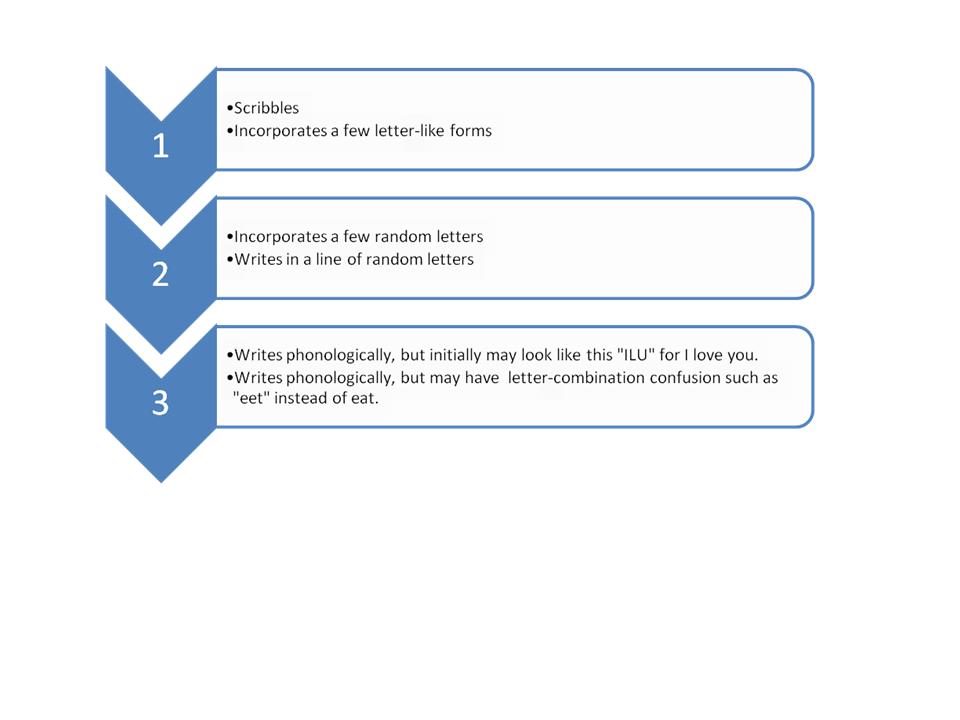There are so many different ways you can write with purpose: lists (grocery list, wish list, checklist, etc.), postcards and letters, journals, menus, signs (traffic, household, labels), and many more.
After years of exposure to all these different written language, adults written form looks clear and organized whereas a beginner’s written understandings may look like zigzags, horizontal lines, and swirls because they view writing in a linear way, and I am writing about this today so you understand that that is OKAY….it is all part of the process. Children’s writing process looks like this:
 Children have to experiment with writing in many ways before they start to learn what it is all about. So, today I want you to let your child write a letter on the template provided. Don’t pay attention to any details (letters fitting on the lines, or really letters in general). Let them scribble out the letter if they want. You can keep a notepad next to you and write down everything they said afterwards, but for now let them get carried away! You can learn a lot about what your child does understand from just listening and watching. Does your child make letter-like forms? Does your child try to incorporate letters? Does your child try to sound out words? But do try to observe how your child holds their pencil and what hand they are writing with. They should hold their pencil with their thumb and middle finger, with top-support from the pointer, and bottom-support from the ring-finger.
Children have to experiment with writing in many ways before they start to learn what it is all about. So, today I want you to let your child write a letter on the template provided. Don’t pay attention to any details (letters fitting on the lines, or really letters in general). Let them scribble out the letter if they want. You can keep a notepad next to you and write down everything they said afterwards, but for now let them get carried away! You can learn a lot about what your child does understand from just listening and watching. Does your child make letter-like forms? Does your child try to incorporate letters? Does your child try to sound out words? But do try to observe how your child holds their pencil and what hand they are writing with. They should hold their pencil with their thumb and middle finger, with top-support from the pointer, and bottom-support from the ring-finger.
Letter Template
Have fun!

